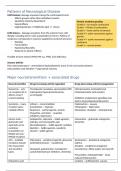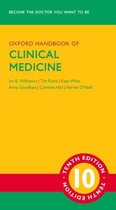Summary
Summary Neurology lecture notes
- Course
- Institution
- Book
Summary of neurological conditions as covered in the Oxford Clinical Handbook. Contains information about clinical features of each condition, as well as relevant diagnostic tests and investigations, risk factors, causes and management guidelines. Everything has been cross referenced with passmed...
[Show more]




